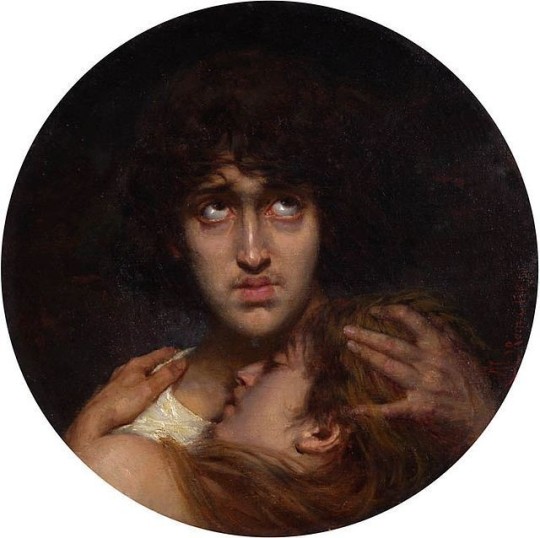#Paolo III
Explore tagged Tumblr posts
Text

Detail from the history of Paul III, Francesco Salviati, about 1558
#paolo iii#farnese#francesco salviati#16th century#palazzo farnese#art history#art#aesthethic#italian art#rinascimento
18 notes
·
View notes
Text

Old, not to be scrapped.
Behind what the eyes hyde.
0 notes
Text

Amazing X-Men 1 homage by Paolo Rivera! Wow!
#marvel#x-men#x-men 1#jim lee#scott williams#paolo rivera#Cyclops#scott summers#Logan#Wolverine#colossus#peter rasputin#jean grey#storm#ororo munroe#psylocke#betsy braddock#archangel#warren worthington iii#the beast#beast#hank mccoy#iceman#bobby drake#rogue#gambit#remy lebeau#magneto#erik lehnsherr#professor x
236 notes
·
View notes
Text

Robert Williams III, Paolo Banchero, and Wendell Carter Jr. 2024-25 NBA Regular Season
#Robert Williams III#Paolo Banchero#Wendell Carter Jr.#Wendell Carter Jr#orlando magic#portland trail blazers#basketball#sports#nba#illustration#illustrators on tumblr#illustrators
2 notes
·
View notes
Photo





Johnny’s latest promotion meant that his entire work schedule would now be a bit different. For one thing, he’d be starting and ending his shifts a lot earlier than before.
With only a few hours to spare before having to head off to work, he decided to go for a quick jog.
“Hey Johnny!”
He was barely a few feet from his house when he heard the familiar voice of Paolo. The husbands were hanging out together on a bench by the sidewalk.
“Hey guys,” Johnny greeted them. “I like your cold weather outfits. You wouldn’t think we’d be needing those here, huh? It’s been some crazy weather!”
“Yeah, feels like just days ago we were in a heat wave,” Paolo chuckled.
“So, how have you two been?” Johnny asked, hoping their issues were resolved. Paolo did look a lot more cheerful at least, so maybe it was a sign their marriage was heading in the right direction?
“We’re good,” J said. “Really good.”
34 notes
·
View notes
Text
PART 3
Never-before-seen photo of four royal mothers, including Queen Elizabeth and Princess Margaret with their newborn babies, as a personal token to doctor who delivered them to go on display at Buckingham Palace
By Rebecca English, Royal Editor and Mark Duell
16 May 2024








—
'Royal Portraits: A Century of Photography' is at The King's Gallery, Buckingham Palace, from tomorrow (May 17) until October 6, 2024.
#Queen Elizabeth II#Prince Philip#Princess Alexandra#Princess of Wales#King Charles III#Princess Anne#Catherine Princess of Wales#Catherine Middleton#Kate Middleton#British Royal Family#Royal Portraits: A Century of Photography#The King's Gallery#Buckingham Palace#royal portraits#vintage photos#Martin Charteris#Andy Warhol#Polly Borland#Antony Armstrong-Jones#Lord Snowdon#Paolo Roversi#Franz Xaver Winterhalter#Royal Collection
3 notes
·
View notes
Text
La Chiesa di San Giacomo della Vittoria candidata come Luogo del Cuore FAI 2024/2025. Una nuova occasione per sostenere la conservazione di uno dei patrimoni storici di Alessandria
Anche quest’anno, la Chiesa di San Giacomo della Vittoria, conosciuta anche come Santuario dell'Addolorata, è candidata a diventare Luogo del Cuore FAI 2024/2025
Anche quest’anno, la Chiesa di San Giacomo della Vittoria, conosciuta anche come Santuario dell’Addolorata, è candidata a diventare Luogo del Cuore FAI 2024/2025. Grazie al censimento spontaneo promosso dal FAI – Fondo Ambiente Italiano in collaborazione con Intesa San Paolo, questa chiesa di Alessandria ha l’opportunità di essere riconosciuta come uno dei siti più amati del nostro Paese e di…
#Alessandria#Arte Italiana#arte sacra#battaglia di Alessandria#campagna FAI#censimento FAI#CHIESA DI SAN GIACOMO DELLA VITTORIA#Cultura Locale#edifici religiosi storici#Fondo Ambiente Italiano#Gino Bottin#Giovanni III d&039;Armagnac#Intesa San Paolo#Jacopo Dal Verme#luoghi da salvare#Luogo del Cuore FAI 2024#monumenti storici italiani#partecipazione comunitaria#Patrimonio culturale italiano#presbiterio#raccolta firme FAI#recupero artistico#restauro architettonico#restauro della chiesa#restauro della volta#Santuario dell&039;Addolorata Alessandria#scultura lignea della Madonna#SpazioIdea Alessandria#storia della chiesa#Storia di Alessandria
0 notes
Text

#archeologia viva#giunti editore#paolo giulierini#mann#museo archeologico nazionale di napoli#alessandro magno#alexander the great#alessandro iii di macedonia#alejandro magno
0 notes
Text



Spider-Gwen: The Ghost Spider #3 - "Haunted III" (2024)
written by Stephanie Phillips art by Federica Mancin, Paolo Villanelli, & Matt Milla
116 notes
·
View notes
Text
Submissions are closed but many of our noble and worthy Contenders still need Propaganda to aid them...
Of our 294 Entrants, the following 27 have had no text propaganda submitted
Amarendra Baahubali [Prabhas], Baahubali Series (2015-2017)
Arondir [Ismael Cruz Córdova], The Rings of Power (2022-)
Asbjörn [Tom Hopper], Northmen: A Viking Saga (2014)
Balian de Ibelin [Orlando Bloom], Kingdom of Heaven (2005)
Bjørn Ironside [Alexander Ludwig], Vikings (2013-2020)
Sir Bowen [Dennis Quaid], Dragonheart (1996)
Elrond Half-elven [Robert Aramayo], The Rings of Power (2022-)
Geoffrey Chaucer [Pier Paolo Pasolini], The Canterbury Tales (1972)
King Henry VIII [Ray Winstone], Henry VIII (2003)
Isildur, Son of Elendil [Maxim Baldry], The Rings of Power (2022-)
Prince Jingim [Remy Hii], Marco Polo (2014)
Kai [Michael Gothard], Arthur of the Britons (1972, 1973)
Sir Lancelot [Richard Gere], First Knight (1995)
Merlin [Nicol Williamson], Excalibur (1981)
“The Mute” [John Bernthal], Pilgrimage (2017)
“One-Eye” [Mads Mikkelsen], Valhalla Rising (2009)
Sir Percival [Tom Hopper], BBC’s Merlin (2008-2012)
Pero Tovar [Pedro Pascal], The Great Wall (2016)
Ragnar Lothbrook [Travis Fimmel], Vikings (2013-2020)
Richard III [Benedict Cumberbatch], The Hollow Crown (2012-2016)
Robin Hood [Tom Riley], Doctor Who: “The Robot of Sherwood” (2014)
“The Sherriff of Nottingham” [Alan Wheatley], The Adventures of Robin Hood (1955-1959)
“The Sherriff of Nottingham” [Peter Cushing], The Sword of Sherwood Forest (1960)
Syrio Forel [Miltos Yerolemou], Game of Thrones (2011-2019)
Tormund Giantsbane [Kristofer Hivju], Game of Thrones (2011-2019)
Ubbe [Jordan Patrick Smith], Vikings (2013-2020)
Wil Ohmsford [Austin Butler], Shannara Chronicles (2016)
The following 63 DO have text propaganda, but only consisting of a single sentence, (or propaganda that contains spoilers) and could use a bit more...
Aguilar de Nerha [Michael Fassbender], Assassin's Creed (2016)
Allan-A-Dale [Joe Armstrong], BBC’s Robin Hood (2006-2009)
Sultan Alauddin [Ranver Singh], Padmavaat (2018)
Amleth [Alexander Skarsgård], The Northman (2022)
Arman [Matevy Lykov], I Am Dragon (2015)
King Arthur [Graham Chapman], Monty Python and the Holy Grail (1975)
Asneez [Isaac Hayes], Robin Hood: Men in Tights (1993)
Ash Williams [Bruce Campbell], Army of Darkness (1992)
Azog the Defiler [Manu Bennett], The Hobbit Trilogy (2012-2014)
Ser Barristan Selmy [Ian McIlhinney], Game of Thrones (2011-2019)
Sir Brian de Bois-Guilbert [Sam Neill], Ivanhoe (1982)
Carlos I [Álvaro Cervantes], Carlos Rey Emperador (2015-2016)
Cesare Borgia [Mark Ryder], Borgia: Faith and Fear (2011-2014)
Charles Brandon [Henry Cavill], The Tudors (2007-2010)
Chu Hun [Peter Ho], Double World (2020)
Connor MacLeod [Christopher Lambert], Highlander (1986)
Prince Dastan [Jake Gyllenhaal], Prince of Persia: The Sands of Time (2010)
Dong Yilong [Henry Lau], Double World (2020)
Eamon Valda [Abdul Salis], The Wheel of Time (2021-)
Sir Elyan [Adetomiwa Edun], BBC’s Merlin (2008-2012)
Forge Fitzwilliam [Hugh Grant], Dungeons & Dragons: Honor Among Thieves (2023)
Galavant [Joshua Sasse], Galavant (2015-2016)
Galessin, Duke of Orkney [Alexis Hénon], Kaamelott (2004-2009)
Gandalf [Ian McKellan], The Lord of the Rings Trilogy (2001-2003)
Geralt z Rivii [Michał Żebrowski], The Witcher (2002)
Gimli, Son of Gloin [John Rhys-Davies], The Lord of the Rings Trilogy (2001-2003)
Prince Hamlet [Christopher Plummer], Hamlet at Elsinore (1964)
King Henry V Plantagenet [Kenneth Branagh], Henry V (1989)
Prince Humperdink [Chris Sarandon], The Princess Bride (1987)
Ivanhoe [Anthony Andrews], Ivanhoe (1982)
Jack [Tom Cruise], Legend (1985)
Ser Jaime Lannister [Nikolaj Coster-Waldau], Game of Thrones (2011-2019)
Jaskier [Joey Batey], The Witcher (2019-)
Little John [Eric Allan Kramer], Robin Hood: Men in Tights (1993)
Prince John [Richard Lewis], Robin Hood: Men in Tights (1993)
Sir Lancelot [Luc Simon], Lancelot du Lac (1974)
Sir Lancelot [Santiago Cabrera], BBC’s Merlin (2008-2012)
Loial [Hammed Animashaun], The Wheel of Time (2022-)
Matrim “Mat” Cauthon [Donal Finn], The Wheel of Time (2022)
Meriadoc “Merry” Brandybuck [Dominic Monaghan], The Lord of the Rings Trilogy (2001-2003)
Mikoláš Kozlík [František Velecký], Marketa Lazarová (1967)
Murtagh Morzansson [Garrett Hedlund], Eragon (2002)
Niankoro [Issiaka Kane], Yeelen (1987)
Niccolo Machiavelli [Thibaut Evrard], Borgia: Faith and Fear (2011-2014)
Phillippe Gaston [Matthew Broderick], Ladyhawke (1985)
“The Player” [Richard Dreyfuss], Rosencrantz and Guildenstern are Dead (1990)
Rand al’Thor [Josha Stradowski], The Wheel of Time (2022-)
Richard II Plantagenet [Ben Whishaw], The Hollow Crown (2012-2016)
Robin Hood [Kevin Costner], Robin Hood: Prince of Thieves (1991)
Robin Hood [Jonas Armstrong], BBC’s Robin Hood (2006-2009)
Rodrigo Borgia [Jeremy Irons], The Borgias (2011-2013)
Rollo [Clive Standen], Vikings (2013-2020)
Roose Bolton [Michael McElhatton], Game of Thrones (2011-2019)
Saruman [Christopher Lee], The Lord of the Rings Trilogy (2001-2003)
Sid [Luke Youngblood], Galavant (2015-2016)
“Taunting French Guard” [John Cleese], Monty Python and the Holy Grail (1975)
King Theoden, Son of Thengel [Bernard Hill], The Lord of the Rings Trilogy (2001-2003)
Thierry of Janville [Jean-Claude Drouot], Thierry la Fronde (1963-1966)
Sir Thomas Grey [Nigel Terry], Covington Cross (1992)
Trumpkin [Peter Dinklage], The Chronicles of Narnia: Prince Caspian (2008)
Vlad III Dracula [Luke Evans], Dracula Untold (2014)
Wat [Alan Tudyk], A Knight’s Tale (2001)
Wen Kexing [Gong Jun], Word of Honor (2021
And the following 57 have had fewer than 3 pictures submitted as visual propaganda
Prince Aemond Targaryen [Ewan Mitchell], House of the Dragon (2022-)
Ahmad [Mahesh Jadu], Marco Polo (2014)
Shah Ala ad Daula [Olivier Martinez], The Physician (2013)
Alessandro Farnese [Diarmuid Noyes], Borgia (2011-2014)
Amarendra Baahubali [Prabhas], Baahubali (2015-2017)
Amleth [Alexander Skarsgård], The Northman (2022)
Arman [Matvey Lykov], I Am Dragon (2015)
Arthur Pendragon [Oliver Tobias], Arthur of the Britons (1972-1973)
King Arthur [Sean Connery], First Knight (1995)
Sir Bowen [Dennis Quaid], Dragonheart (1996)
Sir Brian de Bois-Guilbert [Sam Neill], Ivanhoe (1982)
Carlos I [Álvaro Cervantes], Carlos Rey Emperador (2015-2016)
King Caspian X [Samuel West], BBC’s Prince Caspian and the Voyage of the Dawn Treader (1989)
Cesare Borgia [Mark Ryder], Borgia (2011-2014)
Prince Charmont [Hugh Dancy], Ella Enchanted (2004)
Chu Hun [Peter Ho], Double World (2020)
Connor MacLeod [Christopher Lambert], Highlander (1986)
Dong Yilong [Henry Lau], Double World (2020)
Fjölnir [Claes Bang], The Northman (2022)
Francesco de Pazzi [Matteo Martari], Medici (2016-2019)
Geoffrey Chaucer [Pier Paolo Pasolini], The Canterbury Tales (1972)
Gest [Jakob Þór Einarsson], Hrafninn flýgur (1984)
Gimli, Son of Gloin [John Rhys-Davies], The Lord of the Rings Trilogy (2001-2003)
King Henry II [Peter O’Toole], The Lion in Winter (1968)
Hugh Beringar [Sean Pertwee], Cadfael (1994-1998)
Prince Jingim [Remy Hii], Marco Polo (2014)
Little John [Nicol Williamson], Robin and Marian (1976)
Kai [Michael Gothard], Arthur of the Britons (1972, 1973)
Sir Lancelot [Richard Gere], First Knight (1995)
Lurtz [Lawrence Makoare], The Lord of the Rings Trilogy (2001-2003)
Meriadoc “Merry” Brandybuck [Dominic Monaghan], The Lord of the Rings Trilogy (2001-2003)
Merlin [Nicol Williamson], Excalibur (1981)
Much [Sam Troughton], BBC’s Robin Hood (2006-2009)
Murtagh Morzansson [Garrett Hedlund], Eragon (2002)
Niankoro [Issiaka Kane], Yeelen (1987)
Niccolo Machiavelli [Thibaut Evrard], Borgia: Faith and Fear (2011-2014)
“The Player” [Richard Dreyfuss], Rosencrantz and Guildenstern are Dead (1990)
Podrick Payne [Daniel Portman], Game of Thrones (2011-2019)
Rilk [Jesse Lee Keeter] JourneyQuest (2010)
Robert the Bruce [Chris Pine], Outlaw King (2018)
Robin Longstride [Russell Crowe], Robin Hood (2010)
Saburo Naotora Ichimonji [Ryu Daisuke], Ran (1985)
Sid [Luke Youngblood], Galavant (2015-2016)
Sihtric Kjartansson [Arnas Fedaravicius], The Last Kingdom (2015-2022)
Syrio Forel [Miltos Yerolemou], Game of Thrones (2011-2019)
“Taunting French Guard” [John Cleese], Monty Python and the Holy Grail (1975)
Thierry of Janville [Jean-Claude Drouot], Thierry la Fronde (1963-1966)
Sir Thomas Grey [Nigel Terry], Covington Cross (1992)
Thraxus Boorman [Amar Chadha-Patel], Willow (2022]
Sir Tristan [Kingsley Ben-Adir], King Arthur: Legend of the Sword (2017)
Uglúk [Nathaniel Lees], The Lord of the Rings Trilogy (2001-2003)
“Unnamed Elf Escort” (Alias: “Figwit”), The Lord of the Rings Trilogy (2001-2003)
Wen Kexing [Gong Jun], Word of Honor (2021
Wil Ohmsford [Austin Butler], The Shannara Chronicles (2016)
Will Scarlett [Patrick Knowles], The Adventures of Robin Hood (1938)
Will Scarlett [Christian Slater], Robin Hood: Prince of Thieves (1991)
Willow Ufgood [Warwick Davis], Willow (1988, 2022)
70 notes
·
View notes
Text
Papa's chasuble colours analysis.
It’s sad to see the fandom so sleepy, so what a better moment to be back with some ramblings…
So, we know each Papa got their own chasuble colour, but is it casually assigned?
In the Catholic church, vestments colours have specific meanings, usually they change based on the celebration or festivity period, so I thought it would be cool to find out if the meanings match in Ghost’s world too.
The colours used by our Papas are:
Papa IV - Blue: Advent. It is a period (usually 24 days) before Christmas. We witnessed his journey from Cardinal to Pope, with his ascension on stage; he basically reborn as Papa Emeritus IV. I think it would be a nice analogy to Christmas. Blue is also connected to the celebrations of the Holy Mary… I don’t think I have to say more.
Papa III - Purple: Lent. It is the 40 days period before Easter, when christians celebrate death and resurrection of Jesus… are you thinking what I’m thinking? Plus, purple is also the color of grief (death) in Catholic Church.
Papa II - Green: Epiphany/Pentecost. The Epiphany indicates many events in Catholicism, in particular the arrival of the Magis at Jesus’ birth, the event of his baptism and the Cana Wedding (that is also a badass painting of Paolo Veronese that the Louvre should give us back, btw. It is one of my life’s missions. They can keep the Mona Lisa.). So we have a birth (Year Zero), the moment Jesus becomes the “son of God” (Jigolo Har Megiddo, to say one) and a feast with wine (Body and Blood…?). The Pentecost is even more interesting; it is celebrated seven Sundays after Easter to celebrate the descent of the Holy Spirit on the Apostles, event that marks the start of the Catholic Church. Now, in 1966 Anton LaVey and Kenneth Anger founded the Church of Satan, declaring that year the Year One. Ghost did the Year Zero, which I always thought was a refer to both the christian Year Zero and the satanic Year One. In both cases, a birth/start is involved, so the birth of the Antichrist as main theme is on point.
Papa I - Red/White: red for Holy Week/Pentecost, white for Christmas/Easter/Marriage. It is often said that Primo represents everything that’s holy, so a refer to the holiest of Christian festivities would make sense to me.
I haven’t gotten into all the details because there would be too much to say and analyze. I don’t know if TF has ever planned all this, maybe not - even if in a last year interview he said he was planning the color scheme of the new era, so it shouldn’t be completely casual-, especially with the first Papas, but even if he didn’t his ass is lucky enough to catch some cool coincidences.
129 notes
·
View notes
Text






These are the earliest (finished) Renaissance paintings in the whole Iberian Peninsula: the musician angels frescoes in the València Cathedral, Valencian Country.
In the year 1469, a fire destroyed the main altar of València's Medieval cathedral, so they needed to rebuild it. In 1472, Roderic de Borja -who would later become the Pope Alexander VI-, came back to València after spending almost 20 years in Rome with his uncle Pope Callixtus III. And he came back with two Italian painters: Paolo da San Leocadio and Francesco Pagano.
At the time, the Renaissance hadn't yet spread outside of Italy. It was starting around 1490 and in the early 1500s that it spread to the rest of Europe. But these two Italian painters who came to València were already painting in Renaissance style.
At first, the Cathedral authorities were unsure of these artists, considering that they had to paint the main altar, the most important place in the whole cathedral. For this reason, they asked them to prove their skills. Paolo de San Leocadio and Francesco Pagano started painting the Shepherds' Adoration, but their skills impressed the cathedral authorities so quickly that they didn't even need to finish it before going on to paint the altar.

The unfinished painting The Shepherds' Adoration (1472) by Paolo da San Leocadio and Francesco Pagano.
A later reform during the Baroque period considered these fresco paintings old-fashioned and covered them with a new Baroque vault. The Renaissance frescoes were brought to light again in 2004. Experts expected to find the frescoes covered by a layer of lime and mostly destroyed, but they were pleasantly surprised to find them in a great state of conservation.
Photos by Catedral de València, Pablo Casino, Prats i Camps and sancholovesart.es.
#valència#país valencià#pintura#arts#història#art history#renaissance#art#history#europe#culture#wanderlust#travel#italian art#painting#fine art#15th century#1400s#music history#music#francesco pagano#paolo da san leocadio
76 notes
·
View notes
Text




Paolo and Francesca, by Ludwik Wiesiołowski / Revenge of the Sith (2005), dir. George Lucas / Revenge of the Sith's Concept Art by Ian McCaig /Paolo and Francesca by Amos Cassioli
If anyone is looking for a direct link between Attack of the Clones and the world of Dante and medieval romance, Padmé’s former suitor’s name is, tellingly, “Palo.” This neatly references the tragic lovers of Paolo and Francesca, who Dante encounters in one of the circles of the Inferno. Francesca was reading the story of Guinevere and Lancelot with Paolo, who was her husband’s brother. The two were so swept up in the tale of forbidden love that they passionately wrote one of their own. - The Star Wars Heresies: Interpreting the Themes, Symbols and Philosophies of Episodes I, II, III by Paul F. McDonald
#star wars#prequel trilogy#anakin skywalker#padme amidala#anakin and padme#anidala#dante's inferno#divine comedy#parallels#comparatives
95 notes
·
View notes
Text
Georg Philipp Telemann (1681-1767) - Fantasia No. 10 for Solo Viola da gamba in E-Major, TWV 40:35, III. Scherzando. Performed by Paolo Pandolfo, viola da gamba.
#georg philipp telemann#baroque#classical music#viola da gamba#fantasia#period performance#period instruments#chamber music#baroque music#telemann#fantasy#fantaisie#viol#bass viol#viol family#strings#scherzo#scherzando
44 notes
·
View notes
Text
Opera on YouTube
I've shared links to complete opera performances before, but I love to share them, so I thought I'd make a few masterposts.
These list are by no means the only complete filmed performances of these operas on YouTube, but I decided that ten links for each opera was enough for now.
By the way, some of the subtitles are just a part of the video, while others require you to click CC to see them.
Die Zauberflöte (The Magic Flute)
Hamburg Philharmonic State Opera, 1971 (Nicolai Gedda, Edith Mathis, William Workman, Christina Deutekom, Hans Sotin; conducted by Horst Stein; English subtitles)
Ingmar Bergman film, 1975 (Josef Köstlinger, Irma Urrila, Håkan Hagegård, Birgit Nordin, Ulrik Cold; conducted by Eric Ericson; sung in Swedish; English subtitles)
Salzburg Festival, 1982 (Peter Schreier, Ileana Cotrubas, Christian Bösch, Edita Gruberova, Martti Talvela; conducted by James Levine; Japanese subtitles)
Bavarian State Opera, 1983 (Francisco Araiza, Lucia Popp, Wolfgang Brendel, Edita Gruberova, Kurt Moll; conducted by Wolfgang Sawallisch; English subtitles)
Metropolitan Opera, 1991 (Francisco Araiza, Kathleen Battle, Manfred Hemm, Luciana Serra, Kurt Moll; conducted by James Levine; English subtitles)
Paris Opera, 2001 (Piotr Beczala, Dorothea Röschmann, Detlef Roth, Desirée Rancatore, Matti Salminen; conducted by Ivan Fischer; no subtitles)
Royal Opera House, Covent Garden, 2003 (Will Hartman, Dorothea Röschmann, Simon Keenlyside, Diana Damrau, Franz Josef Selig; conducted by Colin Davis; no subtitles) – Act I, Act II
La Monnaie, Brussels, 2005 (Topi Lehtipuu, Sophie Karthäuser, Stephan Loger, Ana Camelia Stefanescu, Harry Peeters; conducted by René Jacobs; French subtitles)
Kenneth Branagh film, 2006 (Joseph Kaiser, Amy Carson, Benjamin Jay Davis, Lyubov Petrova, René Pape; conducted by James Conlon; sung in English)
San Francisco Opera, 2010 (Piotr Beczala, Dina Kuznetsoca, Christopher Maltman, Erika Miklósa, Georg Zeppenfeld; conducted by Donald Runnicles; English subtitles)
La Traviata
Mario Lanfrachi studio film, 1968 (Anna Moffo, Franco Bonisolli, Gino Bechi; conducted by Giuseppe Patané; English subtitles)
Glyndebourne Festival Opera, 1987 (Marie McLaughlin, Walter MacNeil, Brent Ellis; conducted by Bernard Haitink; Italian and Portuguese subtitles)
Teatro alla Scala, 1992 (Tiziana Fabbricini, Roberto Alagna, Paolo Coni; conducted by Riccardo Muti; English subtitles)
Royal Opera House, Covent Garden, 1994 (Angela Gheorghiu, Frank Lopardo, Leo Nucci; conducted by Georg Solti; Spanish subtitles)
Teatro Giuseppe Verdi, 2003 (Stefania Bonfadelli, Scott Piper, Renato Bruson; conducted by Plácido Domingo; Spanish subtitles)
Salzburg Festival, 2005 (Anna Netrebko, Rolando Villazón, Thomas Hampson; conducted by Carlo Rizzi; no subtitles)
Los Angeles Opera, 2006 (Renée Fleming, Rolando Villazón, Renato Bruson; conducted by James Conlon; English subtitles)
Opera Festival St. Margarethen, 2008 (Kristiane Kaiser, Jean-Francois Borras, Georg Tichy; conducted by Ernst Märzendorfer; English subtitles)
Teatro Real di Madrid, 2015 (Ermonela Jaho, Francesco Demuro, Juan Jesús Rodríguez; conducted by Renato Palumbo; English subtitles)
Teatro Massimo, 2023 (Nino Machiadze, Saimir Pirgu, Roberto Frontali; conducted by Carlo Goldstein; no subtitles)
Carmen
Herbert von Karajan studio film, 1967 (Grace Bumbry, Jon Vickers; conducted by Herbert von Karajan; English subtitles)
Vienna State Opera, 1978 (Elena Obraztsova, Plácido Domingo; conducted by Carlos Kleiber; English Subtitles)
Francisco Rosi film, 1982 (Julia Migenes, Plácido Domingo; conducted by Lorin Maazel; English subtitles)
Metropolitan Opera, 1987 (Agnes Baltsa, José Carreras; conducted by James Levine; English subtitles)
London Earls Court Arena, 1989 (Maria Ewing, Jacque Trussel; conducted by Jaques Delacote; English subtitles)
Royal Opera House, Covent Garden, 1991 (Maria Ewing, Luis Lima; conducted by Zubin Mehta; English subtitles) – Acts I and II, Acts III and IV
Arena di Verona, 2003 (Marina Domashenko, Marco Berti; conducted by Alain Lombard; Italian subtitles)
Royal Opera House, Covent Garden, 2006 (Anna Caterina Antonacci, Jonas Kaufmann; conducted by Antonio Pappano; English subtitles) – Acts I and II, Acts III and IV
Metropolitan Opera, 2010 (Elina Garanca, Roberto Alagna; conducted by Yannick Nézet-Séguin; English subtitles) – Acts I and II, Acts III and IV
Opéra-Comique, 2023 (Gaëlle Arquez, Frédéric Antoun; conducted by Louis Langrée; English subtitles)
La Bohéme
Franco Zeffirelli studio film, 1965 (Mirella Freni, Gianni Raimondi; conducted by Herbert von Karajan; English subtitles)
Metropolitan Opera, 1977 (Renata Scotto, Luciano Pavarotti; conducted by James Levine; no subtitles)
Teatro alla Scala, 1979 (Ileana Cotrubas, Luciano Pavarotti; conducted by Carlos Kleiber; no subtitles)
Opera Australia, 1993 (Cheryl Barker, David Hobson; conducted by Julian Smith; Brazilian Portuguese subtitles)
Teatro Regio di Torino, 1996 (Mirella Freni, Luciano Pavarotti; conducted by Daniel Oren; Italian subtitles)
Teatro alla Scala, 2003 (Cristina Gallardo-Domâs, Marcelo Alvarez; conducted by Bruno Bartoletti; Spanish subtitles)
Zürich Opera House, 2005 (Cristina Gallardo-Domâs, Marcello Giordani; conducted by Franz Welser-Möst; no subtitles)
Robert Dornhelm film, 2009 (Anna Netrebko, Rolando Villazón; conducted by Bertrand de Billy; no subtitles)
Opera Australia, 2011 (Takesha Meshé Kizart, Ji-Min Park; Shao-Chia Lü; no subtitles)
Sigulda Opera Festival, 2022 (Maija Kovalevska, Mihail Mihaylov; conducted by Vladimir Kiradjiev; English subtitles)
#opera#youtube#complete performances#die zauberflöte#the magic flute#la traviata#carmen#la boheme#wolfgang amadeus mozart#giuseppe verdi#georges bizet#giacomo puccini
33 notes
·
View notes
Photo





On Tuesday morning, Johnny suggested they invite the only other young adult couple in the area that they knew: J Huntington III and Paolo Rocca.
“Ronin is actually getting really into programming,” Johnny said to break the ice. “Did I tell you J is a programmer? Maybe you’ll end up co-workers soon!”
“That’s great,” Ronin replied awkwardly.
“So Ronin, you’re a played sim? What’s that been like for you?” Paolo asked.
“It’s fine. I’ve been adjusting well.” Again Ronin kept his answer brief. He preferred to watch the trio chat instead, feeling a lot less pressure that way.
“You’re being modest. We’ve been doing really well!” Johnny chimed in. “Look what we’ve managed to build in just over a sim week!”
"Maybe one day you’ll be able to buy the Affluista Mansion all on your own,” J pointed out with a smirk. “That’ll show ‘em to woohoo with you.”
“What’s that?” Ronin asked.
“Where I grew up,” Johnny replied with a grimace. “Otherwise known as the Landgraab Estate.”
#sims 4#sims 4 legacy challenge#vega legacy#ronin vega#johnny zest#j huntington III#paolo rocca#vega gen 1
27 notes
·
View notes